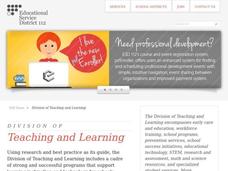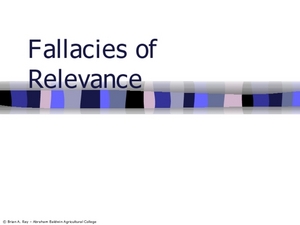Curated OER
Using Math to Draw the Mayflower
Third graders access information from a website about the Pilgrims trip on the Mayflower and discuss the number of people on the ship and the time they spent on the ship. They draw, label and measure the Mayflower to perspective.
Cuba War and Peace: Lecture II 1952 to 2015
Students consider the causes and consequences of the Cuban Revolution, including the Batista regime, independence movements of Latin America and Cold War geopolitics. Particular attention is paid to the Eisenhower, Castro, Khrushchev and...
Curated OER
America the Beautiful
Young scholars listen to a read-aloud discussing the landmarks of the United States. In pairs, they use the internet to research a landmark of their choice. They create a visual aid to be given with a presentation sharing the...
Curated OER
We The People
Students engage in this introductory unit of history which is ideal for the first few weeks of instruction. The unit is meant to prepare students for the nation wide contest associated with History Day.
Curated OER
Name Game
Students explore the concept of philanthropy. For this service learning lesson, students find an act of philanthropy in a book and then illustrate 4 examples people doing good for others.
Curated OER
The Early 19c: The Creation of an American Culture
Full of good information and photos from the 1700's to the 2004 election, this powerpoint could be a great resource in a lecture about American nationalism. While the slides require commentary and smooth transitions (as well as a little...
Curated OER
A Critical Look at Aboriginal Art
Students observe art from different Aboriginal cultures. In this art evaluation lesson, students discover the different traditions of cultures from the Pacific North West. Students judge the art from these cultures with a specific...
Curated OER
Ragtime: 1880-1920
Build an understanding of the social, economic, and cultural changes that were incited by the American Industrial Revolution. Learners will research the historical context of the Ragtime Era, and compose an oral presentation in the voice...
Curated OER
Overland Trails To The West
After observing a map of trails that settlers took in the 1800s, your class will write a journal with the perspective of a settler. In their journals, they must describe the trail they traveled, geographical features they saw, states and...
Center for History Education
Runaway Slaves: From the Revolution to the New Republic
Who were the enslaved people in colonial America? Using ads from enslavers looking to recapture escaped people, young historians put faces and identities to them. Primary sources, such as wanted ads, help scholars reconstruct who these...
Curated OER
Making a Report to President Washington
Young scholars gain an understanding of some of the challenges the U.S. faced at its birth. They are asked to compose a report on the state of the nation in 1790 (addressed to President George Washington), which includes a narrative,...
Curated OER
Prehistoric Culture
Make prehistoric culture easy for your class to understand with this well-composed presentation. It provides timelines for the Neolithic, paleolithic age, and the agricultural revolution. Images and information on two prehistoric sites...
Curated OER
Fallacies of Relevance
Review more than nine verbal and written fallacies in arguments. Many definitions and examples are given to encourage your scholars to avoid fallacies such as ad hominem and red herring. By doing this, they will have stronger speeches...
Student Handouts
Letter from Christopher Columbus to Luis de Sant Angel Announcing His Discovery (1493)
When Christopher Columbus landed, he found many things to comment on. Have your class read this letter that he wrote to Luis de Sant Angel in 1493. The text is split up into sections. Each section is paired with two to three...
K20 LEARN
But What About Me?: Teaching Perspective In The Social Studies Classroom
How would the story of the discovery of America be different if indigenous people told it through their eyes? Individuals compare the conventional account of this moment in history to an account given by one of the native peoples. After...
Curated OER
After Reconstruction: Problems of African Americans in the South
Learners describe issues or problems facing African Americans following Reconstruction. They explain possible solutions to these problems suggested in the sources found and cite arguments for and against those solutions. Analyze primary...
Curated OER
The Atomic Age: Living in the 1950s with the Threat of a Nuclear War
The threat of a Nuclear attack was very real for people in the 1950s. Share the hysteria, propaganda, and reasons behind this Cold War tactic gone overboard. A great presentation intended to build a context for understanding mid-century...
Curated OER
The Earliest Americans
The topic of the peopling of the Americas offers the opportunity for a fascinating discussion. Give your class the knowledge they need to understand the migration across Beringia, the hunter-gatherer lifestyle, and the impact of...
iCivics
Mini-Lesson: Gerrymandering
Who determines the structure of voting districts? The concept of gerrymandering brings to light the ongoing issue of how those running for office gain votes. Hands-on activities enable scholars to analyze the re-drawing of voting...
College Board
2011 AP® English Language and Composition Free-Response Questions
Mammals can be carnivores, omnivores, and herbivores, but what about locavores? A set of free-response questions from the 2011 AP® English Language and Composition exam introduces test-takers to the term, which describes people who try...
Teaching Tolerance
News Consumers' Bill of Rights and Responsibilities
Believe it or not, people have rights as new consumers. Scholars read PEN America's News Consumers' Bill of Rights and Responsibilities and work in small groups to paraphrase chosen sections of the text. Next, they create and present...
Curated OER
American Colonial Life in the Late 1700s: Distant Cousins
Young scholars research how early colonists lived. They investigate late 17th century colonist's lives from Massachusetts and Delaware. Using their research, students write historical fiction in the form of friendly letters between the...
Curated OER
International Curiosity and National Pride
Students analyze their own culture and a Bulgarian culture to identify national, local, or ethnic traits. In this culture analysis lesson plan, students identify three important characteristics of their culture and compose a list of...
Curated OER
This Land Is Your Land
Students explore the many faces of America through the video, "This Land Is Your Land." They discuss places they may have visited and record their responses. Students create symbols that respresent the riches of America.

























